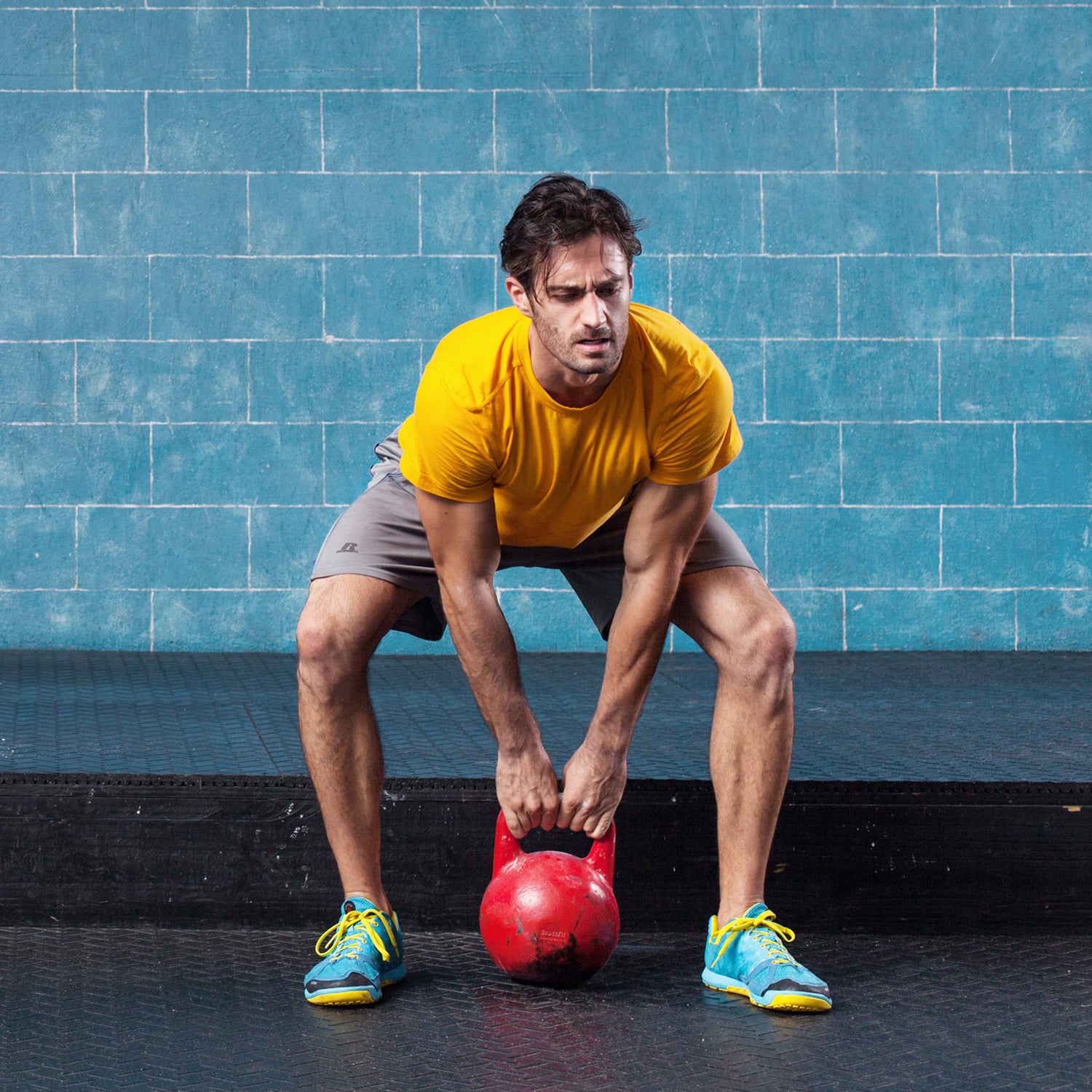One March day in 1894, a woman named Emily Brown squeezed a rubber bulb with her left hand 10 times, as hard as she could. The bulb was attached to an instrument that gauged the strength of her grip. She was establishing a baseline.
Eight times over the next 13 days, Brown did the same contractions, this time with her other hand—essentially putting that hand on a workout program. Her ‘trainer’ was Edward Wheeler Scripture, an American physician and psychologist, who had recently co-founded the .
On the thirteenth day, Dr. Scripture had Brown squeeze the bulb with her untrained, left hand, and something amazing happened: though she had only worked on the strength of her right hand, Brown had seemingly increased the strength of her left hand by 43 percent.
This effect, often called “cross education,” has been replicated by scientists many times since the nineteenth century. A 2006 analysis of 16 cross-education studies found that the strength of the untrained limb increased about seven percent, on average—about half of the strength gain of the limb that did the workouts.
How far does the phenomenon extend in the body? In the past few years researchers have been exploring that question. What they’ve found is both odd and fascinating. Different parts of our body seem to talk to each other and influence each other, even when they are far apart and—one might think—unconnected. More than simply curiosities, these connections could have implications not only for how athletes train but also for how people should rehabilitate after an injury to one side of the body.
“We’re so interconnected, both sides,” says David Behm, a research professor at the School of Human Kinetics and Recreation at Memorial University of Newfoundland in Canada who has co-authored several of the recent studies.
Here are some of the more interesting discoveries:
The Left Leg Knows What the Right Hand Is Doing
One of the most interesting of these findings is that exercising an arm doesn’t just influence the other arm but can actually impact the performance of the lower body.
In one study, researchers found that soon after young men and women performed rounds of a fatiguing handgrip exercise, the ability of their plantar flexor (ankle-area) muscles to produce force “significantly decreased” by two measures, according to a 2013 study in the European Journal of Applied Physiology. Another study found that fatiguing the elbow flexors meant that test subjects couldn’t fully activate their quadricep muscles, found a 2014 study in the journal Applied Physiology, Nutrition, and Metabolism.
“[T]he bottom line is the fatigue does seem to ‘travel’ from one muscle group to another, and mainly, from upper to lower body rather than from lower body to upper body,” writes Israel Halperin, the lead author of the 2014 study and a PhD scholar with Edith-Cowan University and the Australian Institute of Sport. Or at least it manifests differently in the upper body.
So what’s going on?
When you do those bicep curls, your biceps aren’t the only thing getting a workout. Your central nervous system (a.k.a. the CNS) gets a workout, too, researchers believe, as it deals with all of the information that it’s processing—contracting one muscle, relaxing another, balancing your body, keeping a firm grip. That’s a fair bit of work. As a result, the nervous system gets a little fatigued, says Behm.
Now let’s say you drop the dumbbells and bust out the door for a run. Lower-body muscle groups like the quadriceps are larger than, say, elbow flexors and biceps. They have more motor units—the places in your legs where the electrical signal is converted to movement—and also have a larger percentage of fast-twitch muscle fibers, says Behm. All of these factors mean that using them puts a strain on a nervous system that’s already a little tired, the theory goes. It’s similar to what happens when the lights dim in a small town after a big factory turns on its machinery.
How all of this is connected is still not fully known. While researchers understand pretty well how our muscles function, our wiring is even more complicated. “Generally we know that there are changes and inhibitions that happen in both the brain and the spinal cord,” Behm says. “But we’re not exactly sure of the pathway for it.”
A blend of factors, though, may cause a non-local muscle to tire. “Mainly, we are talking about neural (brain and spinal cord), peripheral (various metabolites), biochemical (accumulated fatigue in stabilization muscles required to stabilize the body during the tests) and psychological (deficits in motivation to complete the task with much effort) pathways, and their interaction,” says Halperin.
Stretching
Stretching, too, has been found to produce intriguing “crossover” effects. In one study by Behm and colleagues, participants experienced “significant” increases of eight-to-nine percent in the range of motion of their shoulders after they performed static and dynamic stretching in their lower bodies.
Conversely, the participants experienced more than a five percent increase in range of motion of their hip flexors after they performed static stretches on their upper body, according to a 2016 study in the European Journal of Applied Physiology.
“Stretch one part of your body and another part becomes more flexible,” says Behm.
In another study, 14 crew rowers engaged in multiple days of stretching sessions in which they did several repetitions of hip-flexor stretches, either static or dynamic. During each session, one hip-flexor was stretched; the other one wasn’t. Range of motion of each hip flexor was measured. The results: depending on the type of stretch the range of motion of the unstretched limb either was nearly as good, or even better, than the stretched limb.
The reason the unexercised limb experienced such benefits has to do with “increased stretch tolerance,” say researchers. “Stretching can be uncomfortable,” Behm explains. “You pull that muscle and it’s not a very nice feeling, all that tension on your muscle. But if you’ve already stretched, you’ve accommodated that in a certain limb.” The discomfort is now expected; it becomes more manageable, and you allow yourself to settle into it.
“It makes sense that if you increase the range of motion in one limb, the nervous system is going to mimic that in the other,” says Arnold Nelson, a professor in the Department of Kinesiology at Louisiana State University who has been involved in several other stretching studies. “You don’t want to take a four-foot stride with one limb, and not be able to do that with the other. The body wants to be able to keep everything in balance, as best as it can.”
CNS Training for Improved Performance
Information like this could benefit high-end athletes. Studies show that static stretching produces minor, short-term impairments in performance, the kind of impairments most of us gladly trade off for the benefits that stretching provides. But running five percent slower could spell disaster for a thoroughbred Olympic sprinter. But if that same sprinter stretched his shoulders instead of his legs, right before he stepped into the blocks? In theory, he would gain increased range of motion in his legs, with no downside, according to Behm.
Stretching one limb can affect the opposite (aka contralateral) limb, too. In one study researchers had 13 people stretch one of their calves four times per day for 30 seconds each, a few times per week for 10 weeks. They didn’t stretch the other calf at all. Meanwhile, a control group did no stretching to either calf.
Just as expected, after 10 weeks the stretched calf experienced significant increases both in range of motion and strength—29 percent stronger. While the unstretched calf didn’t gain any range of motion (it actually fell by one percent), the lazy calf nonetheless got 11-percent stronger, according to the 2012 study in the Journal of Strength and Conditioning Research.
A ten-week study isn’t enough time to build much muscle mass, says Nelson, the lead author. Instead, “most of the strength increase is in neural components: you learn to do better synchronization, better use of activation of the muscle itself.” And that’s something that even the passive leg apparently can learn—at least in part.
Some Disagreement
Studies have found many more effects on the lower body than on the upper body, leading to some disagreement among researchers about whether the phenomenon really operates both ways—that is, if what happens in the lower limbs really affects the upper limbs. Behm thinks it does.
In a study last year, he and colleagues had 18 young men who were weight training regularly perform knee extensions until those muscles were exhausted. Then the men’s elbow joint strength was tested by doing several repetitions of an exercise. “The first few repetitions we didn’t see it, but we did see it in the last six” repetitions, when the men showed about a five percent loss of strength, Behm says. In other words, the men did fine with a few reps, but flagged down the stretch.
This, too, has implications for training.
“If you’re an athlete and are wanting to get the best training possible, and you wonder if you can go for a run then do an upper-body workout, the answer is ‘no,’” Behm says. “If you’re an elite athlete, 5-to-10 percent (impairment) every day could affect your training outcomes.”
Why does this happen? “It goes back to the mental energy that you need” to perform a task—what Behm calls “neural drive.” After having used the big muscles of the lower leg on, say, a strong run, the nervous system is pretty fatigued. You can power through a few repetitions of an upper-body exercise. But after a few more, you start to crumble. “The mental fatigue, the mental exertion from a hard run will impair or cause deficits to your upper body when you try to lift weights.”
CNS Training: Putting It to Use
These findings could help accelerate recovery for those people—athletes and otherwise—who have sustained injuries to one side of their body, researchers say.
Let’s say you’ve broken your right leg skiing and now wear a cast on it. If you want to minimize strength loss and rebound from the injury as fast as possible, a great idea would be to exercise your uninjured, left leg—including doing some stretching. True, the casted leg muscles would still atrophy. But with the stretches “you might at least be able to maintain something—it’s only neural, but at least it’s something,” says Nelson.
What’s more, says Behm, by keeping the other leg active, “the central nervous system’s ability to signal that muscle would still be high.” Roughly put, the nervous system grows dull without use, too. But if you keep the lines of communication open and sharp, when that is removed, you won’t have to rebuild that network from scratch. Yes, your muscles will still need rebuilding, but you will be able to recruit those fast-twitch motor units, enabling you to more quickly jump back into training and activities.


